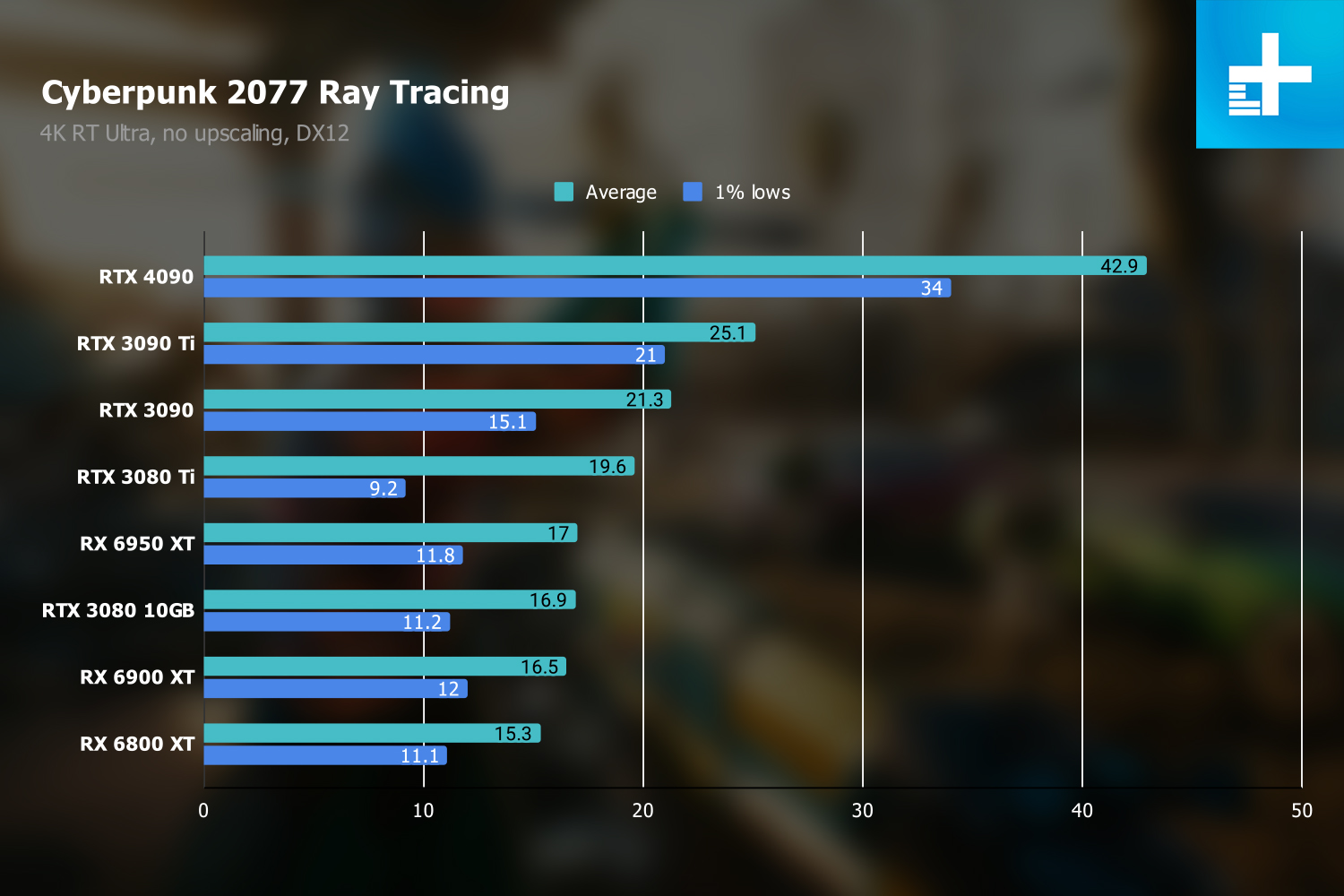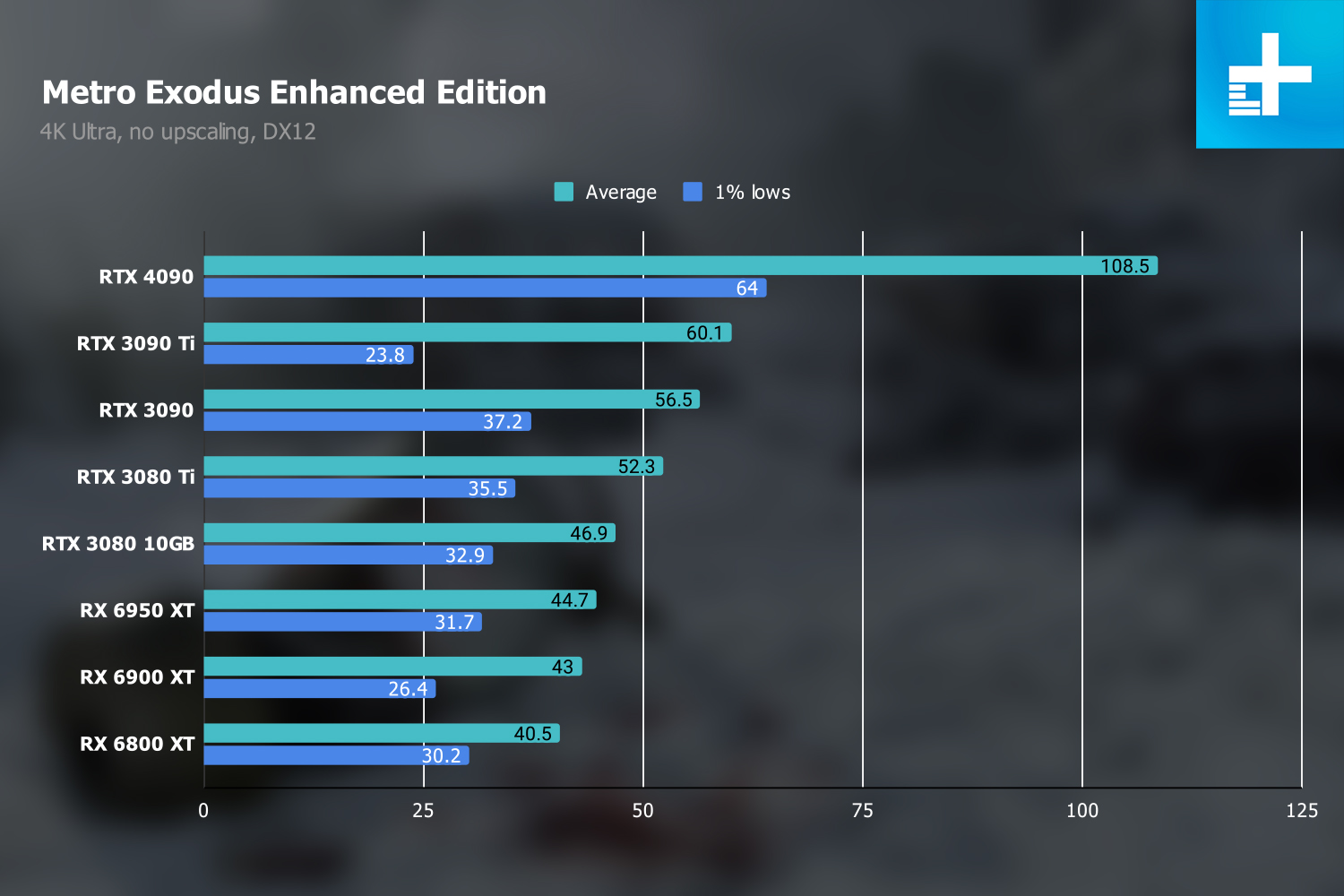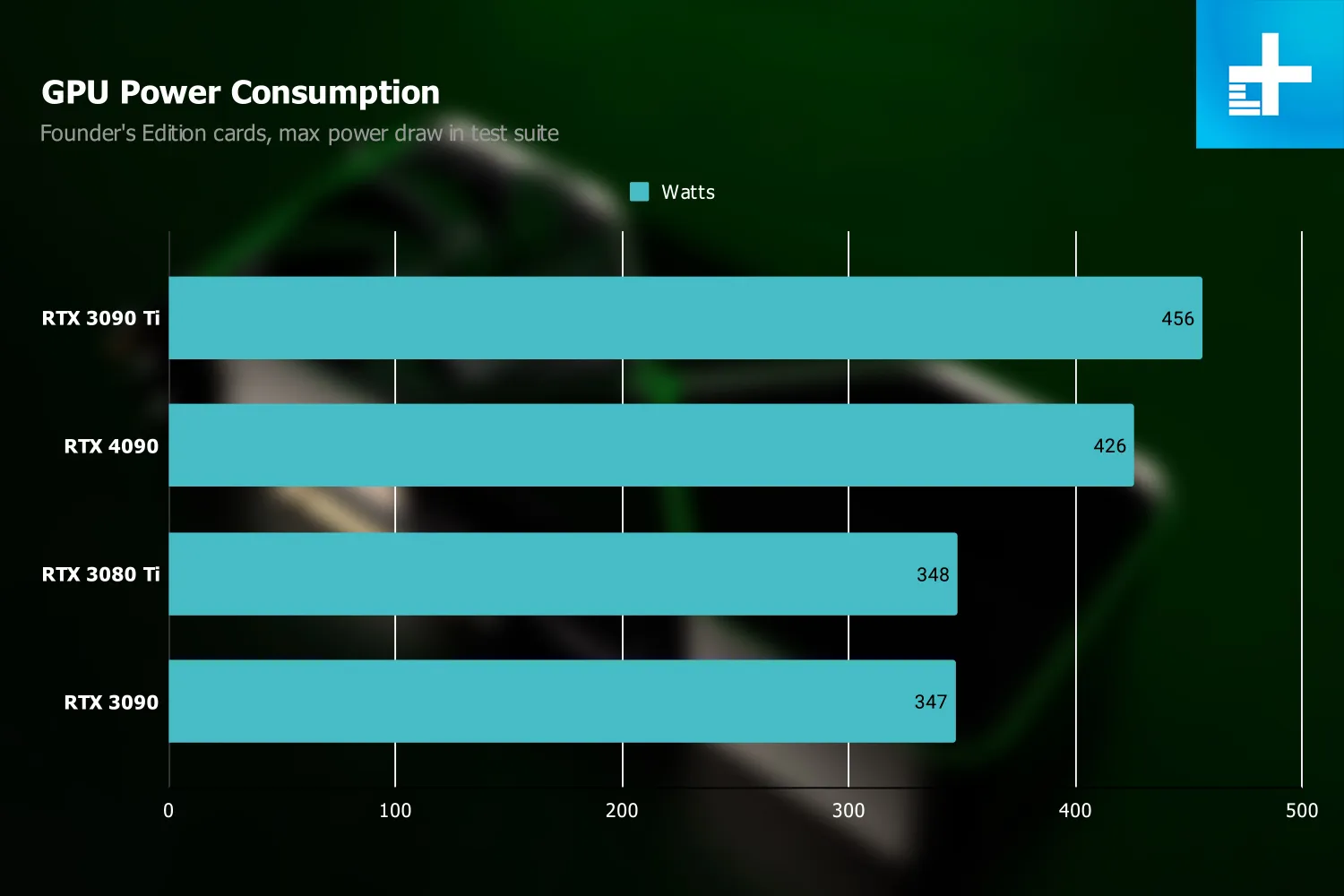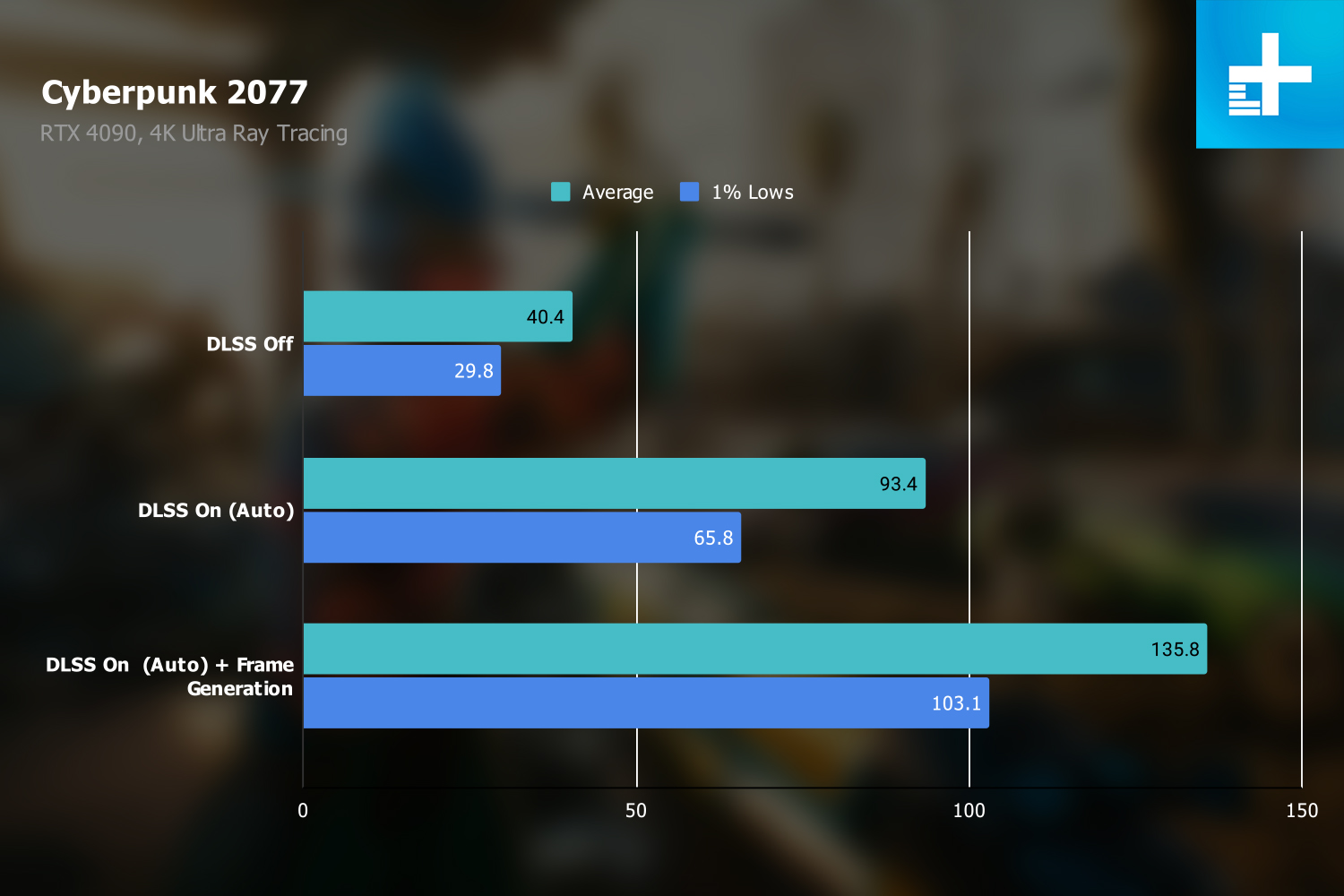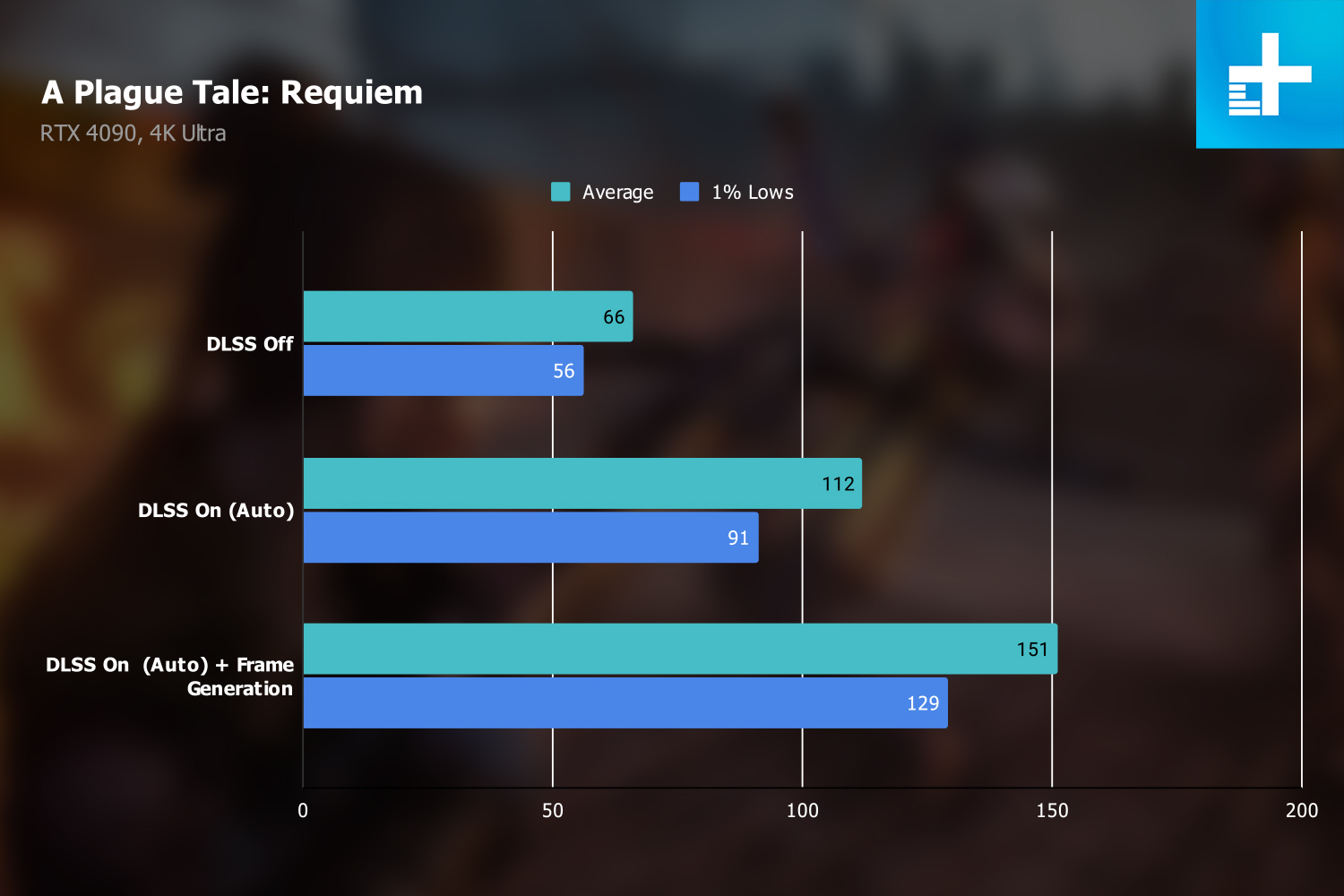Nvidia RTX 4090: news, specs, price, release date, and more
[ad_1]
Nvidia’s RTX 4090 is the new flagship of a new generation of Nvidia graphics cards based on its Ada Lovelace architecture. It brings with it new technologies, new enhancements, and a big uplift in general GPU performance. It’s looking to support the next generation of games with big improvements to ray tracing and deep learning super sampling (DLSS) performance in particular.
Undoubtedly set to top our list of the most powerful GPUs you can buy, here’s everything you need to know about the Nvidia RTX 4090.
Pricing and release date

Nvidia debuted the RTX 4090 in its GTC keynote address on September 20, revealing that the new card will launch on October 12, with a price of $1,599. It will be joined later by the RTX 4080 16GB at $1,200 and the RTX 4080 12GB at $900, both of which will launch in November (Nvidia hasn’t shared an exact release date yet).
This price is much lower than the original predictions suggested, with some leaks claiming it would be north of $2,000. However, it’s clear from Nvidia’s continued promotion of its RTX 3080, 3070, and 3060 that it may not have lower-tier Lovelace cards for some time, instead using existing stock of the RTX 3000-series to flesh out its GPU lineup for the time being.
Specifications
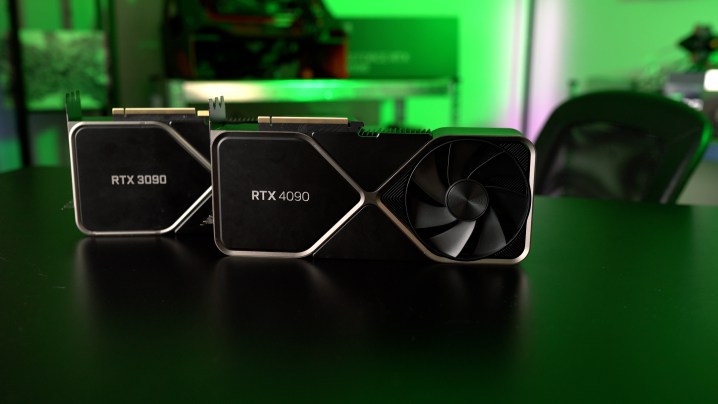
Nvidia’s debut of the RTX 4090 only revealed the most key specifications for the card, but a full spec sheet followed shortly after and confirmed many of the rumors and leaks of recent months.
| RTX 4090 | RTX 3090 | |
| Architecture | Ada Lovelace | Ampere |
| Process node | 5nm TSMC | 8nm Samsung |
| CUDA cores | 16,384 | 10,496 |
| Ray tracing cores | 144 3rd-gen | 82 2nd-gen |
| Tensor cores | 576 4th-gen | 328 3rd-gen |
| Base clock speed | 2235MHz | 1394MHz |
| Boost clock speed | 2520MHz | 1695MHz |
| VRAM GDDR6X | 24GB | 24GB |
| Memory speed | 21Gbps | 19.5Gbps |
| Bus width | 384-width | 384-width |
| TDP | 450W | 350W |
The RTX 4090 is based on Nvidia’s new Ada Lovelace architecture built on the latest TSMC 4nm process. That allows for unprecedented efficiency and a much more compact design. The RTX 4090 has more than 50% more CUDA cores than the RTX 3090, and it manages that while increasing clock speeds dramatically. Memory configurations are much the same, with 24GB of GDDR6X running with a 384-bit width.
The power requirements for the 4090 have increased, as expected, though not to the extent that some rumors suggested. At 450W, it’s 100W more than the RTX 3090 but the same as the RTX 3090 Ti.
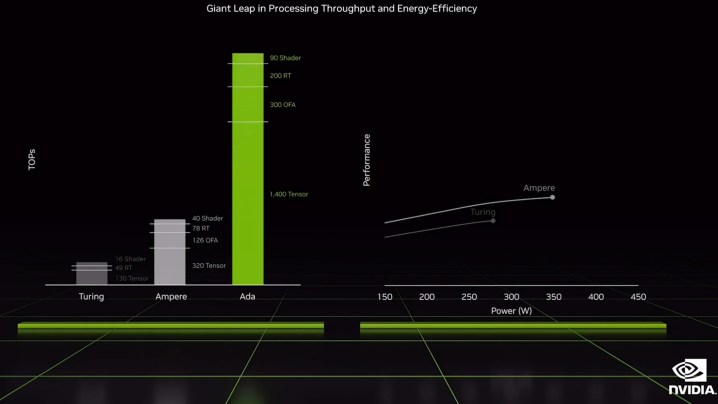
Nvidia also confirmed that the Lovelace GPU will benefit from new-generation RT and tensor cores. The core counts are up here, as well, and they’re redesigned with features like Shader Execution Reordering (SER) that promise to boost ray tracing performance.
Performance

We had a chance to test Nvidia’s latest flagship in our RTX 4090 review, so make sure to read that for a full breakdown of performance. At a high level, the RTX 4090 is around 68% faster than the RTX 3090 Ti at 4K and close to 90% faster than the RTX 3090. That’s a huge generational leap, much more than we typically see.
In many cases, it’s not just a higher number — it’s a performance advantage that makes a big difference. In Cyberpunk 2077 at 4K with all of the settings maxed out, for example, the RTX 4090 managed a 78 frames per second average. In the previous generation, there wasn’t a single GPU that could crack 60 fps in this game with all the sliders turned up.
Similarly, in Assassin’s Creed Valhalla, the RTX 4090 climbs up to 122 fps at 4K, whereas the most powerful GPUs of the previous generation hover around 60 fps. In the most demanding games, the RTX 4090 is the difference between playable and unplayable, as well as passable and ideal.
Although the gains aren’t always as stark, the RTX 4090 is still the fastest GPU you can buy today based on our testing. In Red Dead Redemption 2, it managed nearly 130 fps at 4K, while the RTX 3090 Ti was around 50% behind with an 85 fps average. The same was true in Horizon Zero Dawn, where the RTX 4090 managed 158 fps — more than double the frame rate of the base RTX 3090.
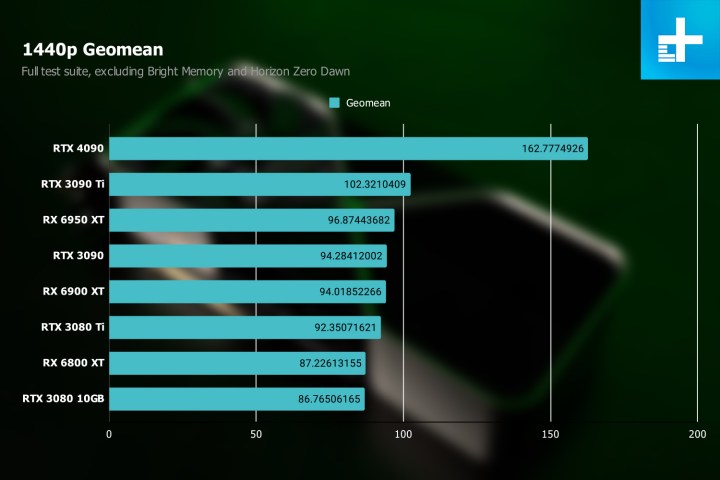
4K is where the RTX 4090 shines most, even if it can hold up at 1440p. The gain is slightly less high as titles become limited by the CPU, but the RTX 4090 is still far and above the fastest graphics card we’ve tested. If you’re playing at 1440p, though, save yourself some money (and hassle) by going with a cheaper card. The RTX 4090 demands a high refresh rate 4K display.
Ray tracing

The RTX 4090 comes with redesigned ray tracing cores, as well as Shader Execution Reordering (SER). SER requires hardware-accelerated GPU scheduling in Windows, and it helps speed up ray tracing operations by reordering when they’re executed. By matching the instruction to the power available at the time, SER promises to dramatically improve ray tracing performance.
And it does, based on our testing. Although it’s not quite double the performance, the RTX 4090 gets close. Metro Exodus Enhanced Edition, which uses full ray-traced lighting, the RTX 4090 is nearly 80% faster than the RTX 3090 Ti. That’s at 4K without upscaling, as well, showing just how much power the RTX 4090 has under the hood.
The same was true in Cyberpunk 2077, where the RTX 4090 nearly doubled the frame rate of the RTX 3090 Ti. Even the RTX 4090 isn’t powerful enough to run full ray tracing in Cyberpunk at 4K, but it’s much closer to the mythical 60 fps mark than any of the top dogs from the previous generation.
Power draw

There were heaps of rumors surrounding the RTX 4090 during its development, specifically about how much power it would require and how much heat it would kick out. It turns out that the rumors were a little overblown, though the RTX 4090 is still a demanding card.
Nvidia recommends an 850W power supply at a minimum for anyone running this graphics card, but the 450W power draw is no more than was already pulled by the RTX 3090 Ti, so it’s not an enormous increase over the previous generation. Keep in mind that 450W is just the power for the Founder’s Edition card. Board partner cards like the Asus ROG Strix can climb higher (Asus recommends a 1,000W power supply for its overclocked version).
Our testing shows that even the most demanding games don’t draw the full 450W out of the RTX 4090. At most, the card drew 426W in our test suite, and it stayed relatively cool at 64 degrees Celsius. That was on an open-air test bench, however, so expect higher temperatures and fan speeds once the card is inside a case.
DLSS 3
The RTX 4090 introduces Nvidia’s third version of Deep Learning Super Sampling (DLSS). DLSS 3 is two parts: Frame generation and Super Resolution. Super Resolution is just like the DLSS we had in the past. It upscales a lower-resolution image to improve performance while using AI to reconstruct the frame as best as possible. Super Resolution still works on RTX 20-series and 30-series GPUs, so you can take advantage of it in DLSS 3 games even if you don’t have the RTX 4090.
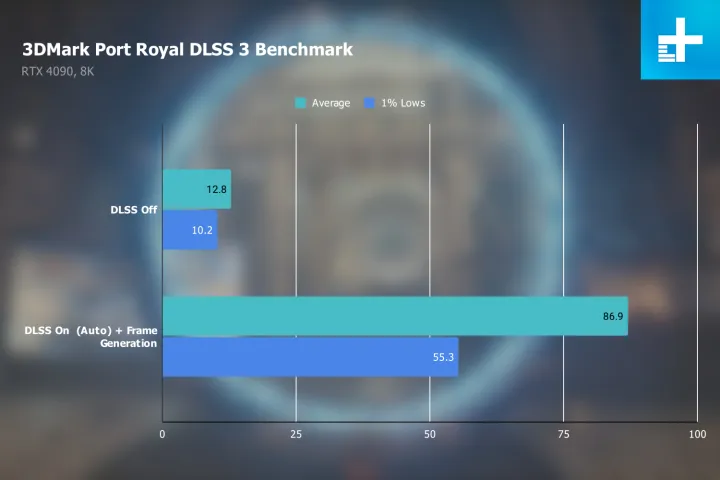
Frame Generation is exclusive to RTX 40-series graphics cards, and it looks to improve performance even further. The AI generates a unique frame every other frame, and not a single pixel is rendered by your GPU. And it works. In 3DMark Port Royal at 8K, DLSS managed a 578% increase in performance.
It works in real games, too. Cyberpunk 2077 saw a 236% increase at 4K with its Ultra RT preset due to DLSS 3, and A Plague Tale Requiem saw a 128% boost. Both of those were with DLSS’ Auto mode, as well. If you use one of the more aggressive image quality presets, you’ll see even higher performance boosts.
DLSS 3 isn’t perfect, though. The AI frames are rife for artifacts, and although they’re only on screen for a fraction of a second, they can degrade the gameplay experience. In A Plague Tale Requiem, you can see how the DLSS 3 version washes out in a mess of pixels in the grass, unsure where they should end up in this fast-moving scene.

The generated frames aren’t processed by your system, either, so DLSS 3 can’t ignore things like your HUD when generating frames. They can be catastrophic for image quality, as you can see with the quest marker in Cyberpunk 2077 below.
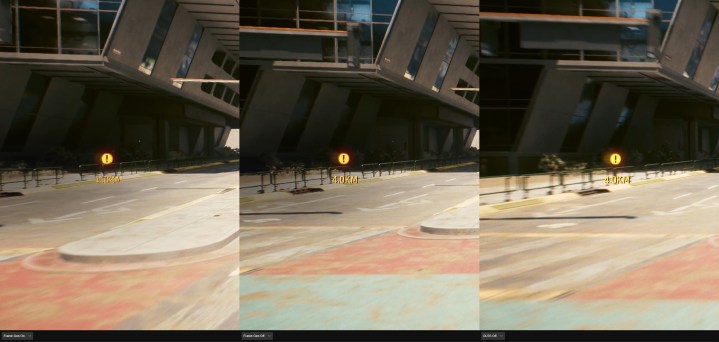
Although DLSS 3 is impressive tech, it still needs some work. Thankfully, Super Resolution on its own still provides massive leaps in performance.
Editors’ Recommendations
[ad_2]
Source link


